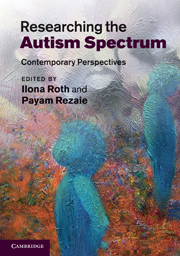Book contents
- Frontmatter
- Contents
- Preface
- Foreword
- List of Contributors
- Introduction
- Part I Classification and Diagnosis
- Part II Genetics, Neurology and Biochemistry
- Part III Cognition, Development and Education
- 7 Psychological models of autism: an overview
- 8 Cognitive flexibility in autism: a social-developmental account
- 9 Language in autism spectrum disorders
- 10 Memory in autism: binding, self and brain
- 11 Measuring executive function in children with high-functioning autism spectrum disorders: what is ecologically valid?
- 12 Autism spectrum disorders in current educational provision
- Index
- Plate section
- References
9 - Language in autism spectrum disorders
Published online by Cambridge University Press: 04 February 2011
- Frontmatter
- Contents
- Preface
- Foreword
- List of Contributors
- Introduction
- Part I Classification and Diagnosis
- Part II Genetics, Neurology and Biochemistry
- Part III Cognition, Development and Education
- 7 Psychological models of autism: an overview
- 8 Cognitive flexibility in autism: a social-developmental account
- 9 Language in autism spectrum disorders
- 10 Memory in autism: binding, self and brain
- 11 Measuring executive function in children with high-functioning autism spectrum disorders: what is ecologically valid?
- 12 Autism spectrum disorders in current educational provision
- Index
- Plate section
- References
Summary
Studies of structural language in individuals with autistic spectrum disorder (ASD) are reviewed, and theories of the causes of structural language anomalies and impairments in ASD are presented and discussed. It is concluded that the factors that may contribute to language impairment in individuals with ASD are many and various; that impaired mindreading is always implicated, but that some additional and critical causal factor remains to be conclusively identified.
Introduction
Languages, defined in formal or structural terms, are systems of mainly arbitrary items (e.g. sounds, signs or written letters; morphemes; words) with rules for combining items to convey meaning to others with shared knowledge of the language. Language can be analysed and characterised at the level of grammar (morphology and syntax) and meaning (semantics); and, in the case of spoken language, phonology.
Communication, on the other hand, involves the use of language in social interaction, whether directly in face-to-face talk, or indirectly as in, for example, a recorded phone message or a Last Will and Testament. Thus, language is a means, or method, of communicating. Non-linguistic, or non-verbal, signals including facial expression, gesture, and body language also provide means, or methods, of communicating. Prosody, which involves the use of vocal tone, pitch, rhythm and inflexion during speech also comes under the heading of non-verbal communication. Factors influencing the communicative use of language and non-verbal communication signals in specific instances can be analysed and characterised in the study of pragmatics.
- Type
- Chapter
- Information
- Researching the Autism SpectrumContemporary Perspectives, pp. 284 - 315Publisher: Cambridge University PressPrint publication year: 2011
References
- 1
- Cited by



